
Enchanting Wachau Valley: Austria's Vine-Lined Gem
Discover the Wachau Valley: A UNESCO World Heritage site with terraced vineyards, historic towns, and breathtaking Danube River views in Austria.
Nestled along the Danube River, the Wachau Valley is a stunning UNESCO World Heritage site known for its picturesque landscapes and historic charm. Spanning 30 kilometers between the towns of Melk and Krems, the valley is famed for its terraced vineyards, quaint villages, and medieval castles. Visitors can explore the historic Melk Abbey, a Baroque masterpiece perched high above the river. The abbey's impressive library and ornate church are must-sees. As you travel through the valley, discover charming towns like Dürnstein, where King Richard the Lionheart was once imprisoned. The town’s blue and white church tower is an iconic landmark. The Wachau Valley is also renowned for its wine, particularly Grüner Veltliner and Riesling. Wine enthusiasts can enjoy tastings at local wineries and heurigen (wine taverns). Cycling and hiking trails offer stunning views of the river and vineyards, making it easy to immerse yourself in the natural beauty of the region. Don't miss the opportunity to take a scenic boat ride along the Danube. The river cruise offers a unique perspective of the valley's rolling hills and historic landmarks. Whether you're a history buff, a wine lover, or simply looking for a peaceful retreat, the Wachau Valley promises an unforgettable experience.
Local tips in Wachau Valley
- Visit in late spring or early autumn to enjoy pleasant weather and avoid peak tourist crowds.
- Rent a bicycle to explore the valley’s scenic trails at your own pace.
- Try the local apricot delicacies, including apricot brandy and jams.
- Take a river cruise for a different perspective of the valley’s stunning landscapes.
- Book guided tours of Melk Abbey to learn about its rich history and architectural details.
Enchanting Wachau Valley: Austria's Vine-Lined Gem
Nestled along the Danube River, the Wachau Valley is a stunning UNESCO World Heritage site known for its picturesque landscapes and historic charm. Spanning 30 kilometers between the towns of Melk and Krems, the valley is famed for its terraced vineyards, quaint villages, and medieval castles. Visitors can explore the historic Melk Abbey, a Baroque masterpiece perched high above the river. The abbey's impressive library and ornate church are must-sees. As you travel through the valley, discover charming towns like Dürnstein, where King Richard the Lionheart was once imprisoned. The town’s blue and white church tower is an iconic landmark. The Wachau Valley is also renowned for its wine, particularly Grüner Veltliner and Riesling. Wine enthusiasts can enjoy tastings at local wineries and heurigen (wine taverns). Cycling and hiking trails offer stunning views of the river and vineyards, making it easy to immerse yourself in the natural beauty of the region. Don't miss the opportunity to take a scenic boat ride along the Danube. The river cruise offers a unique perspective of the valley's rolling hills and historic landmarks. Whether you're a history buff, a wine lover, or simply looking for a peaceful retreat, the Wachau Valley promises an unforgettable experience.
When is the best time to go to Wachau Valley?
Iconic landmarks you can’t miss
Melk Abbey
Experience the architectural splendor and rich history of Melk Abbey, a UNESCO World Heritage site set against the stunning backdrop of the Danube River.
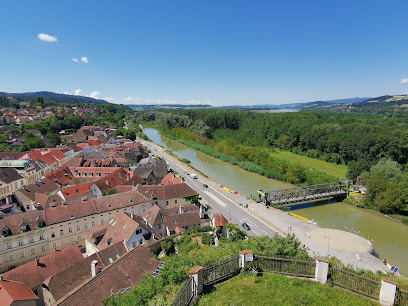
Aggstein Castle
Discover the enchanting Aggstein Castle, a historical marvel offering breathtaking views, hiking trails, and delightful local cuisine in Austria.
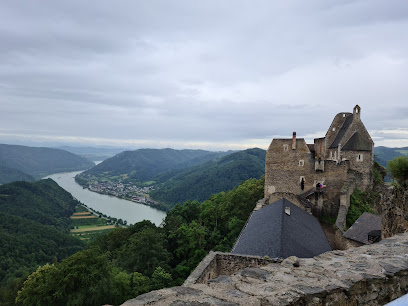
Dürnstein Castle
Discover the enchanting Dürnstein Castle, a historical landmark with stunning views and rich tales from Austria's medieval past.
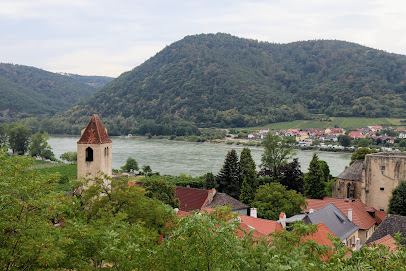
Göttweig Abbey
Discover the serene beauty and rich history of Göttweig Abbey, a cultural landmark offering breathtaking views and spiritual tranquility in Austria.
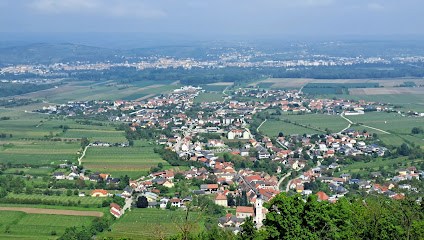
Stift Dürnstein
Explore the rich history and stunning architecture of Stift Dürnstein, a captivating monastery overlooking the Danube River in Austria's scenic Wachau Valley.
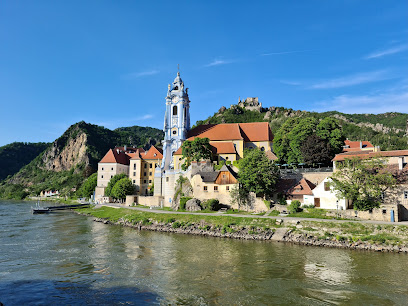
Steinertor
Explore the captivating Steinertor, a historical landmark in Krems an der Donau, and discover the rich heritage of this charming Austrian city.
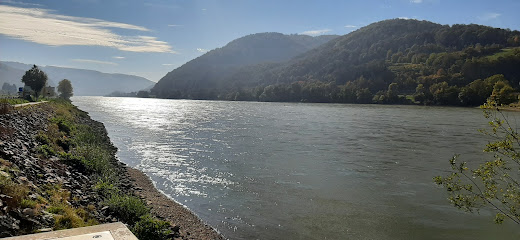
Wachau
Discover the breathtaking beauty and rich heritage of Wachau, Austria's stunning UNESCO World Heritage valley known for its vineyards and historic towns.
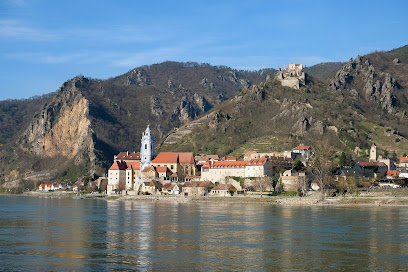
Ruine Hinterhaus
Discover the enchanting Ruine Hinterhaus, a medieval fortress offering stunning views and rich history in the heart of Austria.
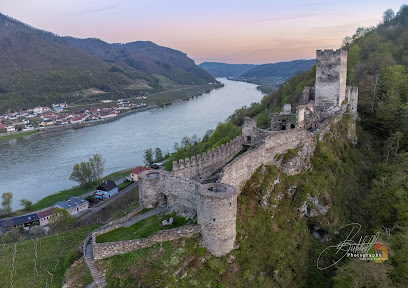
Vogelbergsteig
Explore the breathtaking landscapes and historical wonders of Vogelbergsteig, the ultimate hiking destination in Dürnstein, Austria.
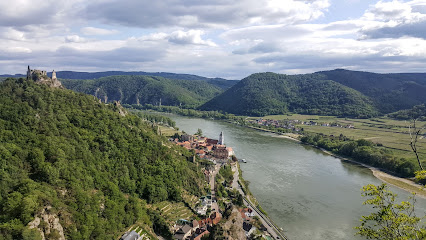
Rotes Tor
Experience the breathtaking views and rich history of Rotes Tor in Spitz an der Donau, a must-visit destination for every traveler in Austria.
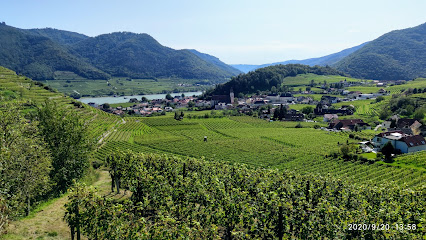
Tausendeimerberg
Explore the breathtaking views and serene hiking trails of Tausendeimerberg in the scenic Wachau Valley, an unforgettable Austrian experience.
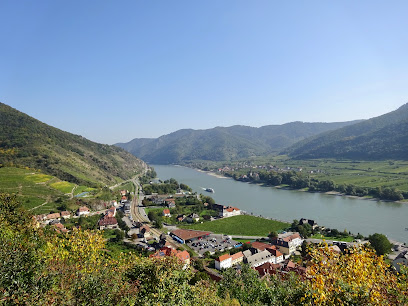
Wehrkirche St. Michael
Experience the rich history and stunning architecture of Wehrkirche St. Michael, a captivating Catholic church in the heart of Austria.
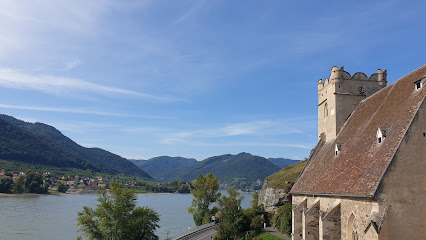
Domäne Wachau
Discover the beauty and flavor of Austrian wines at Domäne Wachau, a stunning winery in the picturesque Wachau Valley.
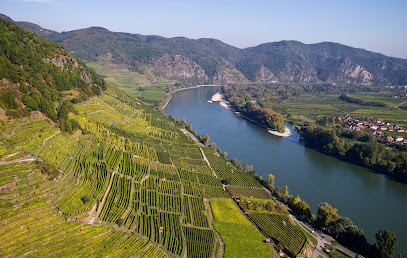
Wachauer Nase
Experience the captivating beauty of Wachauer Nase, a stunning natural landmark in Austria's Wachau region, perfect for outdoor lovers and cultural enthusiasts.
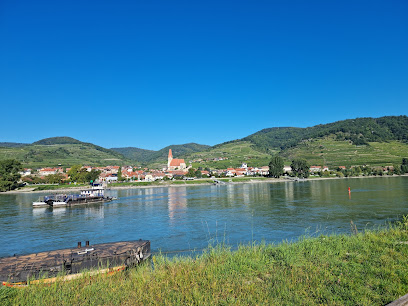
Donau Aussichtspunkt
Explore the stunning vistas of the Danube River at Donau Aussichtspunkt, a scenic spot ideal for nature lovers and photographers.
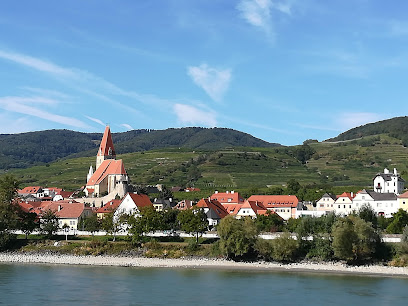
Unmissable attractions to see
Aggstein Castle
Explore the rich history and breathtaking views at Aggstein Castle, a stunning landmark overlooking the scenic Wachau Valley in Austria.
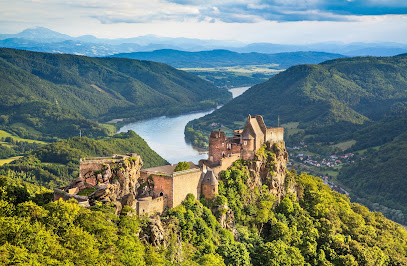
Stift Dürnstein
Discover the breathtaking Stift Dürnstein, a historic monastery and museum nestled in the stunning Wachau Valley, rich in culture and scenic beauty.
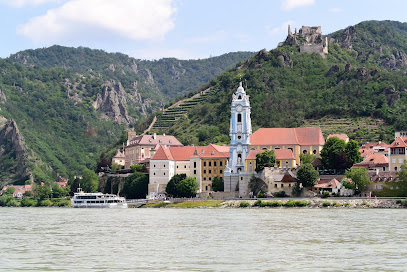
Vogelbergsteig
Discover the breathtaking hiking trails of Vogelbergsteig in Dürnstein, Austria, where stunning landscapes meet rich history.
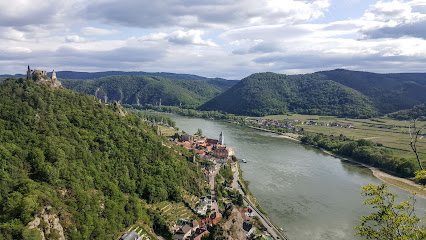
Tausendeimerberg
Explore the breathtaking beauty of Tausendeimerberg, a serene hill offering stunning views of the Wachau Valley and the Danube River.
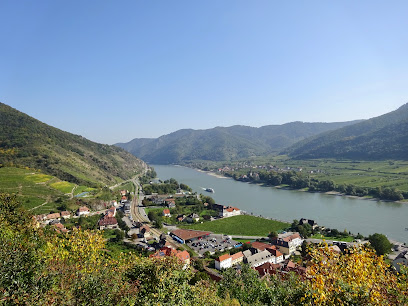
Domäne Wachau
Experience the beauty and flavor of Austrian wines at Domäne Wachau, located in the stunning Wachau Valley.
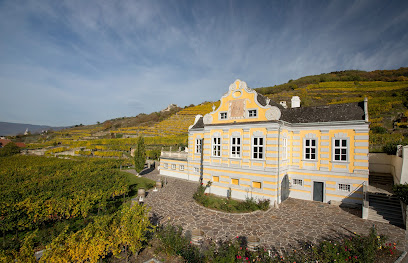
Jauerling-Wachau Nature Park
Explore the breathtaking landscapes and diverse wildlife of Jauerling-Wachau Nature Park, Austria's serene national treasure for nature lovers and adventurers alike.
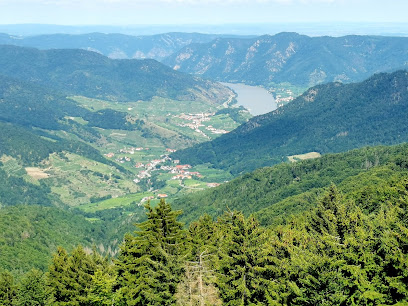
Jauerling Wachau Nature Park
Explore the breathtaking landscapes and rich biodiversity of Jauerling Wachau Nature Park, a haven for nature lovers and outdoor enthusiasts in Austria.
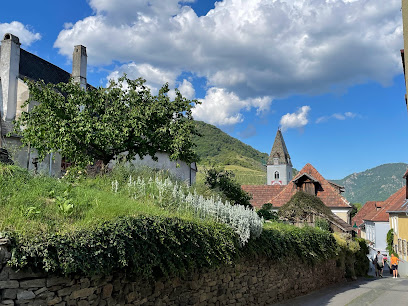
Teufelsmauer
Discover the breathtaking Teufelsmauer, an iconic natural rock formation in Austria, perfect for hiking and nature photography. A must-see for all tourists.
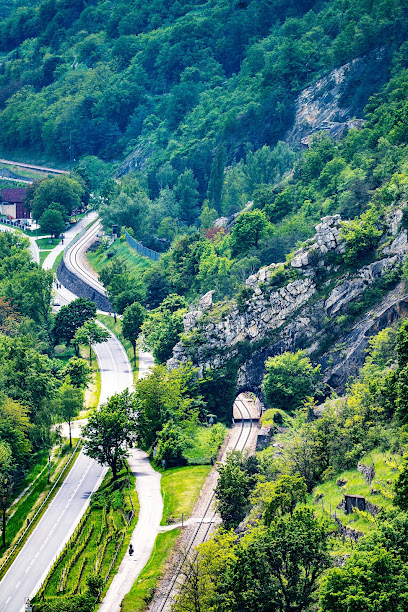
Donaustrand Bacharnsdorf
Explore the tranquility of Donaustrand Bacharnsdorf, a serene riverside retreat on the banks of the Danube, perfect for relaxation and nature lovers.

Burgruine Stein
Explore the enchanting Burgruine Stein, a medieval castle ruin in Krems an der Donau, offering breathtaking views and rich history.
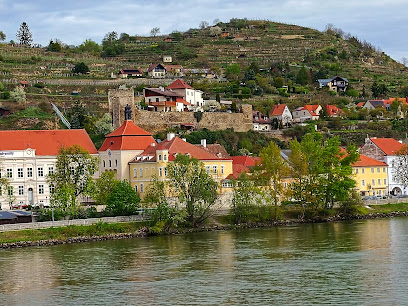
Pfaffenberg
Explore the historical Pfaffenberg in Dürnstein, Austria - a captivating blend of medieval ruins, stunning views, and local culinary delights.
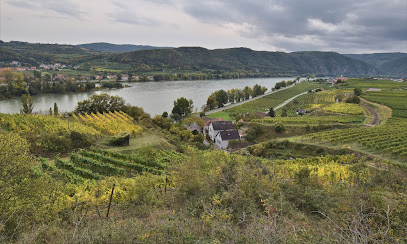
Donaublick Spitz
Explore the breathtaking trails of Donaublick Spitz in the Wachau Valley, where nature and culture intertwine amidst stunning views of the Danube River.

Memorial to priest Erich Hauer
Explore the Memorial to Priest Erich Hauer, a serene tribute in a beautiful park setting, perfect for reflection and honoring community legacy.
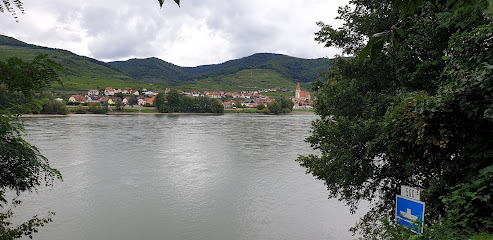
Donauinsel Pritzenau
Experience the natural beauty and tranquility of Donauinsel Pritzenau, a serene island on the Danube River in Dürnstein, Austria.
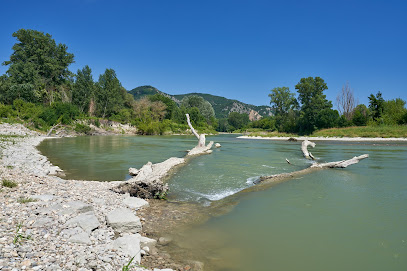
Silberne Weintraube
Experience the breathtaking beauty and rich history of Silberne Weintraube in Austria's stunning Wachau Valley, a perfect destination for every traveler.
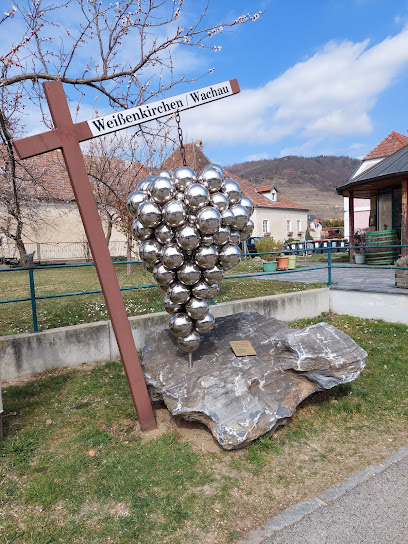
Essential places to dine
Wellen.Spiel
Discover exquisite dining at Wellen.Spiel in Krems an der Donau – where local flavors meet stunning river views.

Restaurant Loibnerhof - Knoll
Experience exquisite gourmet cuisine at Restaurant Loibnerhof - Knoll in Dürnstein, Austria, with stunning views of the Danube River.
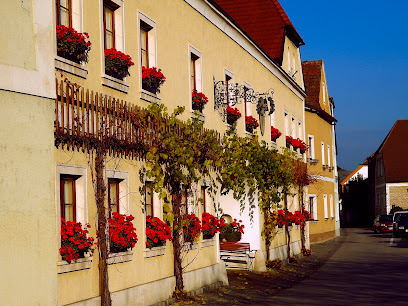
KIRCHENWIRT Hotel Restaurant Wachau
Discover unforgettable culinary experiences and stunning views at Kirchenwirt Hotel Restaurant in Austria's picturesque Wachau Valley.
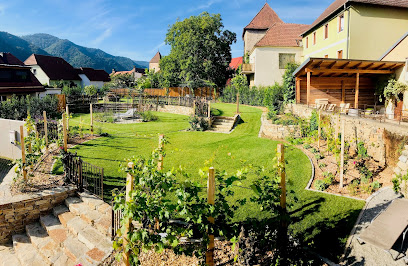
Gasthaus Spitzerl
Experience authentic Austrian cuisine at Gasthaus Spitzerl, nestled by the Danube River with a vibrant beer garden atmosphere.
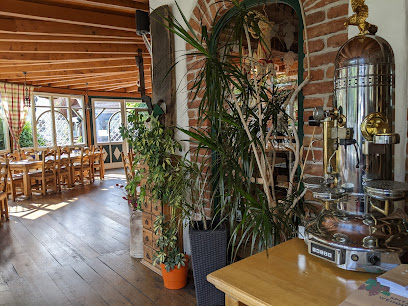
Alter Klosterkeller
Discover Alter Klosterkeller in Dürnstein: A perfect blend of exquisite cuisine and fine local wines amidst breathtaking Austrian landscapes.
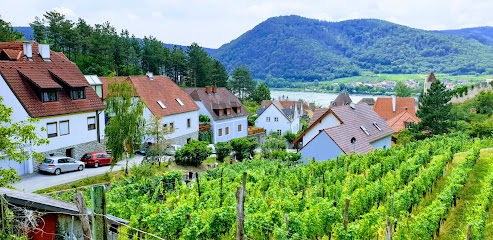
Landgasthaus Essl
Experience authentic Austrian cuisine in the charming ambiance of Landgasthaus Essl - a must-visit destination for food enthusiasts.
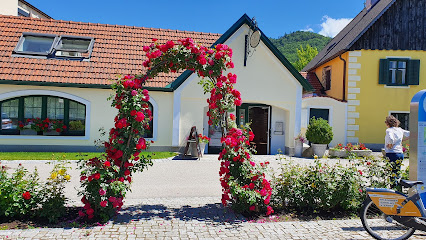
Restaurant Heinzle
Experience traditional Austrian cuisine amidst stunning views at Restaurant Heinzle in Weißenkirchen - a must-visit for food lovers.
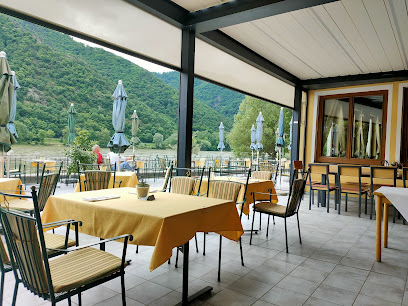
Fesslhütte
Discover culinary delights at Fesslhütte in Dürnstein - where local flavors meet breathtaking scenery.
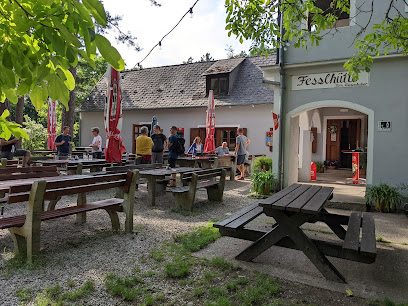
Die Flößerei in Rossatz
Experience authentic Austrian cuisine at Die Flößerei in Rossatz with stunning Danube River views for an unforgettable dining experience.
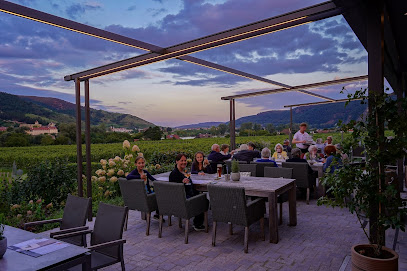
Weinschenke St. Michael
Discover authentic Austrian cuisine and exquisite local wines at Weinschenke St. Michael in Weißenkirchen.
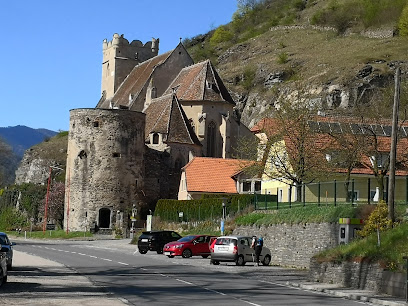
WACHAUERSTUBE Loiben
Discover authentic Austrian flavors at Wachauerstube in Dürnstein, where traditional cuisine meets stunning river views.
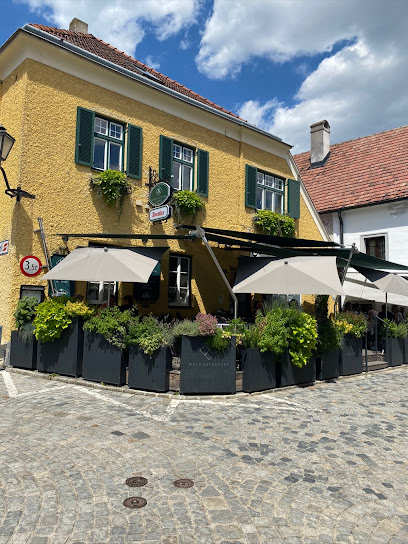
Gartenhotel & Weingut Pfeffel Dürnstein
Experience luxury amidst breathtaking landscapes at Gartenhotel & Weingut Pfeffel Dürnstein - your gateway to Austria's enchanting wine region.
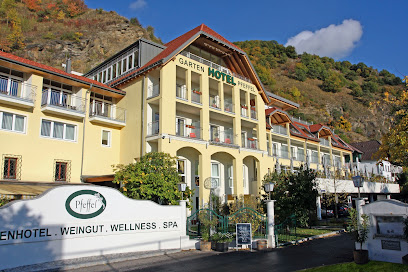
Hofmeisterei Hirtzberger
Experience exquisite fine dining at Hofmeisterei Hirtzberger in Wachau Valley - where culinary tradition meets stunning landscapes.
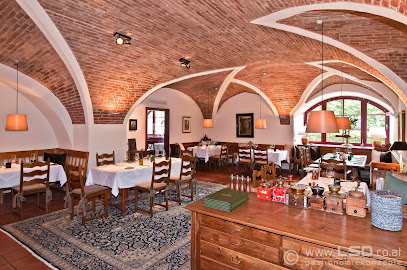
Weinlodge Wachau
Experience authentic Austrian hospitality at Weinlodge Wachau - your gateway to the enchanting beauty of the Wachau Valley.

Dürnsteinerhof
Discover authentic Austrian cuisine at Dürnsteinerhof in Dürnstein – where tradition meets taste amidst breathtaking scenery.
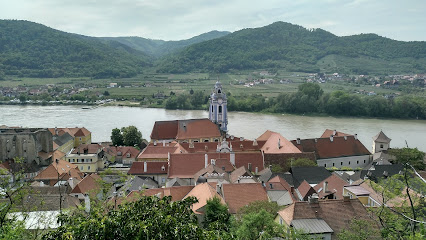
Markets, malls and hidden boutiques
SPAR
Explore local flavors and convenient shopping at SPAR in Weißenkirchen, the perfect stop for tourists in the heart of the Wachau Valley.
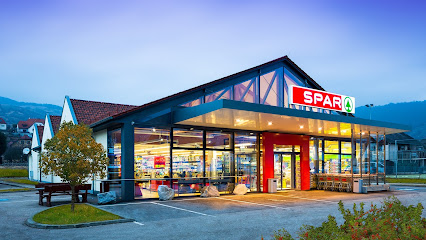
Gärtnerei Hick
Explore Gärtnerei Hick for a stunning selection of flowers and plants in the beautiful Wachau Valley, perfect for garden enthusiasts and casual visitors alike.
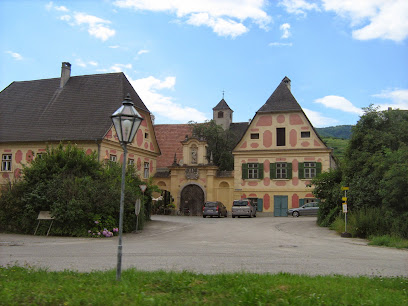
Schloss Greisslerei
Discover the exquisite flavors of Austria at Schloss Greisslerei, a delightful deli in Dürnstein offering local delicacies and artisanal products.
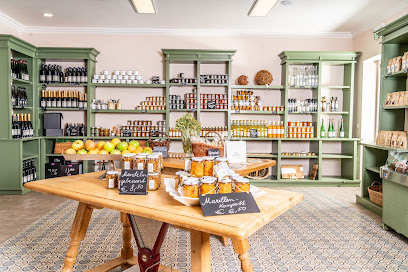
DEKO-, SEIFEN- & GESCHENKELADEN IM SCHLÜSSELAMT KREMS
Explore the DEKO-, SEIFEN- & GESCHENKELADEN IM SCHLÜSSELAMT KREMS: Your destination for unique gifts and local crafts in Krems an der Donau.
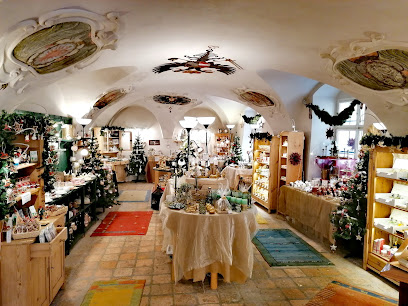
WORACZICZKY - ConceptStore
Discover unique fashion accessories and stylish furniture in Krems an der Donau's premier boutique, WORACZICZKY.
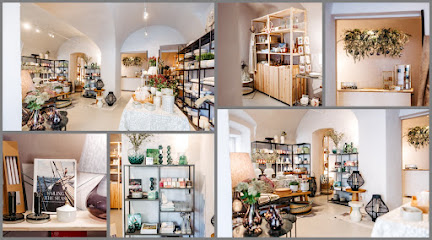
AUST Fashion Krems
Explore AUST Fashion Krems for exquisite women's fashion and a unique shopping experience in the heart of Krems an der Donau.
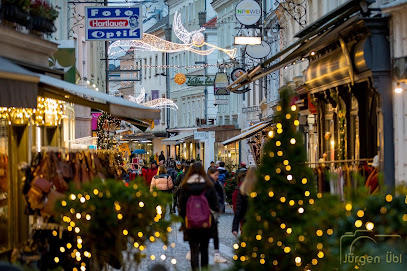
Wieser Wachau Firmensitz & Ab-Hof-Shop
Experience the taste of the Wachau Valley at Wieser Wachau, a gourmet grocery store offering local delicacies and exquisite alcoholic beverages.
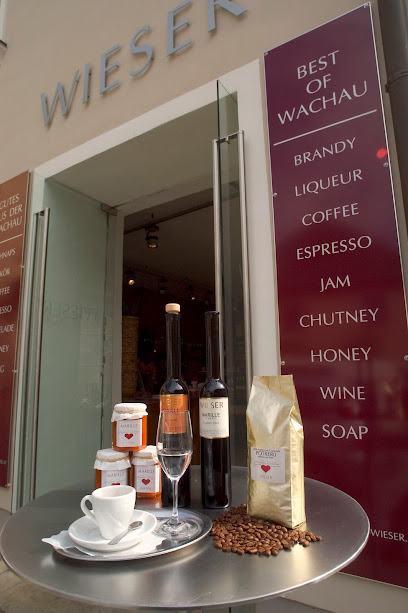
Nanu-Nana
Discover a wonderland of gifts and crafts at Nanu-Nana in Krems an der Donau, where every visit unveils unique treasures for everyone.
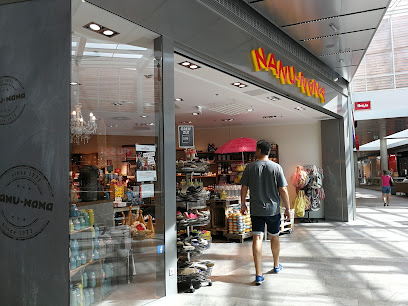
Wachauer Safranmanufaktur
Explore the enchanting Wachauer Safranmanufaktur in Dürnstein, Austria, and discover the art of saffron cultivation and its exquisite culinary uses.
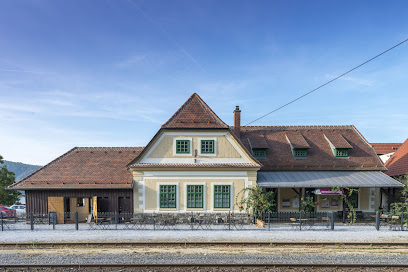
Vinothek Thal Wachau
Discover the finest local wines and regional delicacies at Vinothek Thal Wachau, a charming wine store in the heart of Wachau Valley.
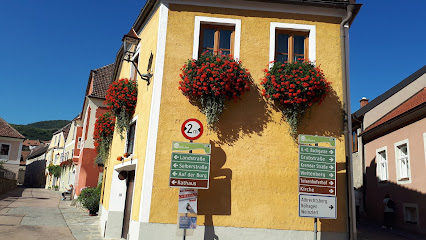
TOM TAILOR Store
Explore stylish clothing and accessories at TOM TAILOR Store in Krems an der Donau, where fashion meets affordability and quality.
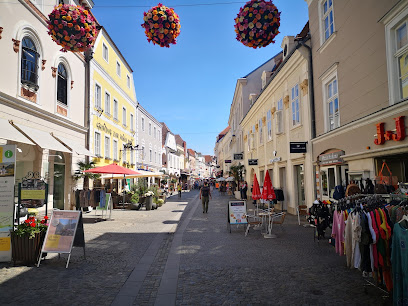
Domäne Wachau Shop 11a Dürnstein Altstadt
Explore the exquisite wines of Domäne Wachau in Dürnstein, where tradition meets breathtaking scenery in the heart of the Wachau Valley.

Volkskultur - Handwerk der Regionen
Explore the vibrant craftsmanship of Austria at Volkskultur - Handwerk der Regionen, a unique clothing store in Krems showcasing local artisans.
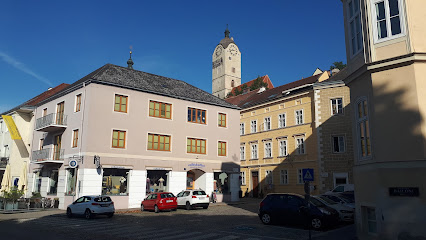
Trafik Glaser
Explore Trafik Glaser in Weißenkirchen: A cozy magazine store offering a rich selection of local and international publications in a charming setting.
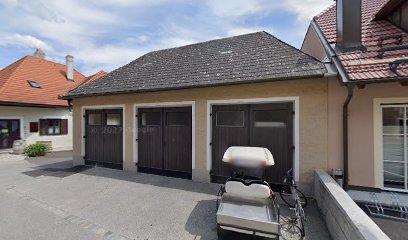
Donau Stein Design
Explore the artistry of handcrafted jewelry and unique souvenirs at Donau Stein Design in the picturesque town of Dürnstein, Austria.
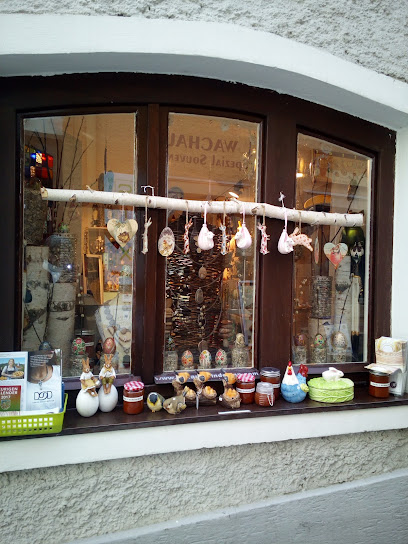
Essential bars & hidden hideouts
Alter Klosterkeller
Discover the authentic flavors of Austria at Alter Klosterkeller in Dürnstein, where exquisite cuisine meets a charming atmosphere.

Weinschenke St. Michael
Experience the flavors of Wachau at Weinschenke St. Michael, where local cuisine meets exceptional wines in a charming setting.
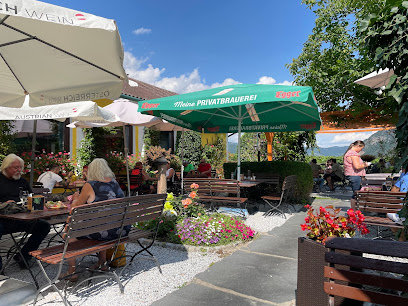
Piano-Bierlokal
Discover the charm of Krems at Piano-Bierlokal, where scenic views meet a vibrant beer garden and local brews await.
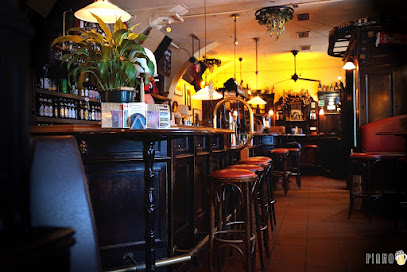
Leopold - bar, wine bar, shop
Discover Leopold, a cozy bar and wine shop in Krems an der Donau, perfect for wine lovers and social gatherings, offering a delightful ambiance and extensive selections.

Altes Presshaus
Experience authentic Austrian dining at Altes Presshaus in Dürnstein, where tradition meets taste in a cozy, welcoming setting.
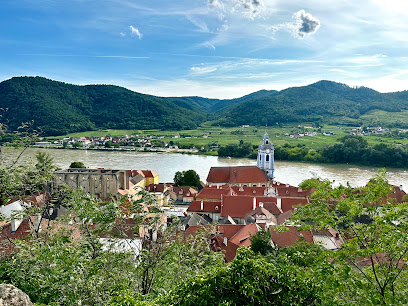
Achleiten Stube
Discover the flavors of Austria at Achleiten Stube, where gourmet food meets a cozy atmosphere in the heart of Weißenkirchen.
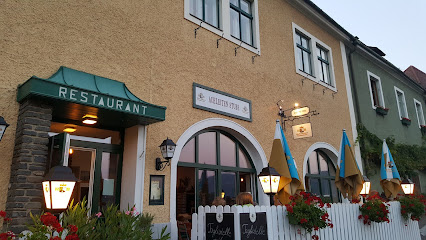
XO Bar & Lounge
Discover Krems an der Donau's vibrant nightlife at XO Bar & Lounge, where expertly crafted cocktails meet an energetic atmosphere.
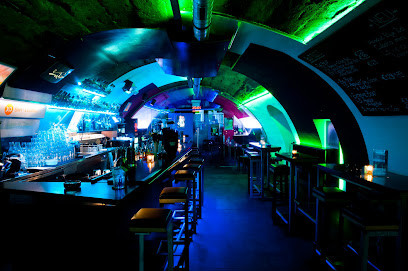
Das Bogerl
Discover the charm of Das Bogerl, a cozy bar in the heart of Wachau, where delightful drinks and local culture come together.
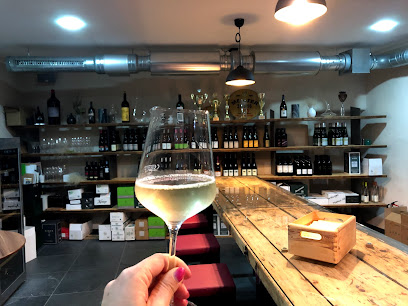
Veit Bar Drinx & Snax
Experience the vibrant nightlife at Veit Bar Drinx & Snax, where locals and tourists gather for drinks and good company in the heart of Krems.

Weinterrasse Kropf
Experience the flavors of the Wachau Valley at Weinterrasse Kropf, where local wines and delicious cuisine come together in a stunning setting.
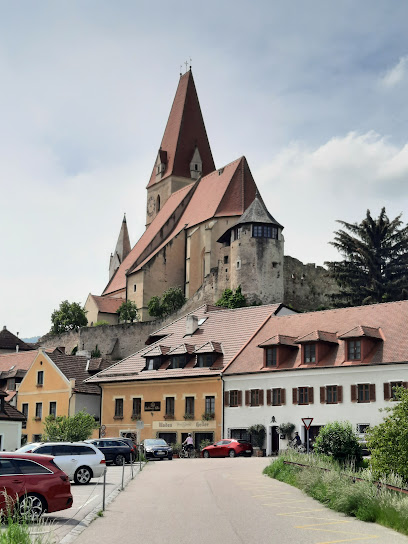
Radler-Rast
Experience authentic Austrian hospitality at Radler-Rast, a cozy bar in Oberarnsdorf perfect for enjoying local brews and delicious snacks.
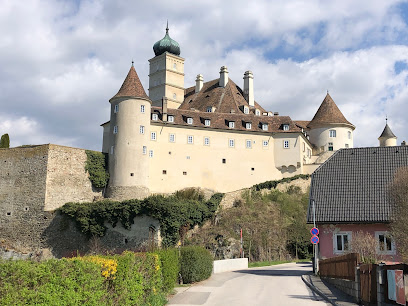
Steirisch Irish Pub
Discover the vibrant atmosphere of Steirisch Irish Pub, where Irish charm meets Austrian hospitality in Krems an der Donau.
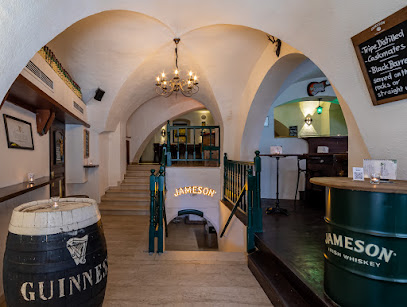
WineTime-Krems
Experience the essence of Austrian wine culture at WineTime-Krems, a cozy bar in Krems an der Donau, featuring an exquisite selection of local wines.
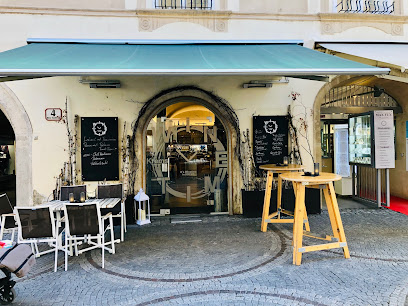
Brauhaus Wösendorf Friesenbichler OG
Discover the essence of Austrian brews and hearty cuisine at Brauhaus Wösendorf, nestled in the stunning Wachau Valley.
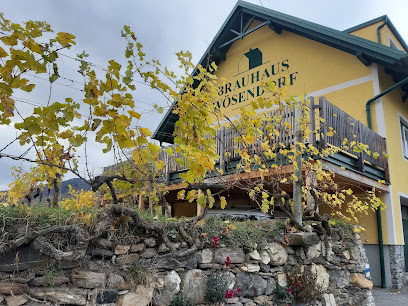
Max Fux Café Bar Wirtshaus
Discover the lively charm of Max Fux Café Bar Wirtshaus in Krems an der Donau, where exquisite drinks meet a vibrant atmosphere for an unforgettable experience.
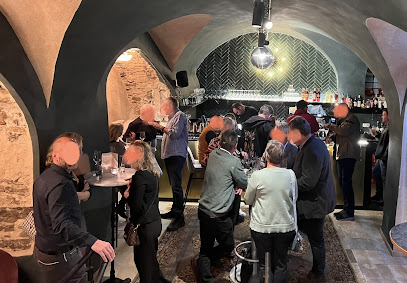
Local Phrases about Wachau Valley
-
- HelloGriaß di
[Gree-ahs dee] - GoodbyePfiat di
[Pfee-aht dee] - YesJa
[Yah] - NoNed
[Ned] - Please/You're welcomeBitte
[Bee-teh] - Thank youDanke
[Dahn-keh] - Excuse me/SorryEntschuldigung
[Ent-shool-dee-goong] - How are you?Wie geht's?
[Vee gayts] - Fine. And you?Gut. Und dir?
[Goot. Oond deer] - Do you speak English?Sprechen Sie Englisch?
[Shpre-khen zee Eng-leesh] - I don't understandI versteh ned
[ee fer-shtay ned]
- HelloGriaß di
-
- I'd like to see the menu, pleaseI hätt gern die Speisekarte, bitte
[Ee hett gehrn dee Spay-zuh-kahr-teh, bee-teh] - I don't eat meatI ess kein Fleisch
[Ee ess kine Fly-sh] - Cheers!Prost!
[Prost] - I would like to pay, pleaseIch möchte zahlen, bitte
[Eekh merk-teh tsah-len, bee-teh]
- I'd like to see the menu, pleaseI hätt gern die Speisekarte, bitte
-
- Help!Hilfe!
[Heel-feh] - Go away!Geh weg!
[Geh vehg] - Call the Police!Rufen Sie die Polizei!
[Roofen zee dee Poh-lee-tzai] - Call a doctor!Rufen Sie einen Arzt!
[Roofen zee ayn-en Ahrts] - I'm lostI bin verloren
[Ee been fer-lo-ren] - I'm illMir ist schlecht
[Meer ist shlekht]
- Help!Hilfe!
-
- I'd like to buy...I möcht kaufn...
[Ee merkht kou-fen] - I'm just lookingI schau nur
[Ee shou noor] - How much is it?Wie viel kostet es?
[Vee feel kos-tet es] - That's too expensiveDes is zu teuer
[Des is tsoo toy-er] - Can you lower the price?Kann man den Preis senken?
[Kahn mahn den prees zain-ken]
- I'd like to buy...I möcht kaufn...
-
- What time is it?Wie spät ist es?
[Vee shpet ist es] - It's one o'clockEs ist ein Uhr
[Es ist eyen oor] - Half past (10)Halb elf
[Halb elf] - MorningMorgen
[Mor-gen] - AfternoonNachmittag
[Nah-mit-tahg] - EveningAbend
[Ah-bend] - YesterdayGestern
[Ges-tern] - TodayHeute
[Hoy-teh] - TomorrowMorgen
[Mor-gen] - 1Eins
[Eyens] - 2Zwei
[Tsvey] - 3Drei
[Drey] - 4Vier
[Feer] - 5Fünf
[Foonf] - 6Sechs
[Zex] - 7Sieben
[Zee-ben] - 8Acht
[Acht] - 9Neun
[Noyen] - 10Zehn
[Tsayn]
- What time is it?Wie spät ist es?
-
- Where's a/the...?Wo ist ein/der...?
[Voh ist eyen/dehr] - What's the address?Was ist die Adresse?
[Vas ist dee Ah-dreh-suh] - Can you show me (on the map)?Können Sie mir zeigen (auf der Karte)?
[Koen-nen zee meer tsai-gen (ouf dehr kar-teh)] - When's the next (bus)?Wann kommt der nächste (Bus)?
[Vahn kohmt dehr nyechs-teh (Boos)] - A ticket (to ....)Eine Fahrkarte (nach ...)
[Ay-ne Fah-rkar-teh (nahh ...)]
- Where's a/the...?Wo ist ein/der...?
History of Wachau Valley
-
The Wachau Valley has been inhabited since prehistoric times, with archaeological evidence indicating settlements dating back to the Paleolithic era. The Venus of Willendorf, a 29,500-year-old artifact, was discovered in the region, offering a glimpse into the ancient human presence in the valley.
-
During the Roman Empire, the Wachau Valley became an essential part of the empire's northern frontier. The Romans constructed fortresses and settlements along the Danube River, remnants of which can still be seen today, such as the ruins at Mautern an der Donau.
-
In the Middle Ages, the Wachau Valley flourished as a center of trade and culture. The construction of imposing castles and monasteries, including the well-preserved Melk Abbey and the ruins of Aggstein Castle, marked this era. The region's strategic location along the Danube made it a vital link in the trade routes of medieval Europe.
-
The Benedictine Melk Abbey, founded in the 11th century, became a beacon of learning and spirituality. Its Baroque transformation in the 18th century, led by architect Jakob Prandtauer, resulted in the stunning architecture and opulent interiors that draw visitors from around the world today.
-
The Wachau Valley experienced significant turmoil during the Napoleonic Wars in the early 19th century. The Battle of Dürnstein in 1805 was a key confrontation between French and Allied forces. The region bore witness to military maneuvers and occupations, leaving a lasting mark on its historical landscape.
-
The Wachau Valley is renowned for its wine production, a tradition that dates back to Roman times. The unique microclimate and terraced vineyards along the Danube create ideal conditions for cultivating world-class wines, particularly Grüner Veltliner and Riesling. The region's wine-making heritage is celebrated annually during various festivals and events.
-
In 2000, the Wachau Valley was designated a UNESCO World Heritage Site, recognizing its outstanding cultural landscape. The valley's harmonious blend of natural beauty, historical architecture, and enduring cultural traditions earned it a place on the prestigious list.
-
Today, the Wachau Valley thrives as a premier tourist destination, attracting visitors with its stunning scenery, historic sites, and rich cultural heritage. The region offers a plethora of activities, from cycling along the Danube to exploring charming villages and sampling exquisite wines, making it a must-visit destination in Austria.
Wachau Valley Essentials
-
Wachau Valley is located in Lower Austria, along the Danube River. The nearest major city is Vienna, which has an international airport (Vienna International Airport). From Vienna, you can reach Wachau Valley by train, car, or boat. Trains run from Vienna to Krems or Melk, the two primary gateways to the valley. The journey by train takes about an hour. Alternatively, you can rent a car and drive, which takes approximately 1.5 hours. During the warmer months, you can also take a scenic boat cruise along the Danube River directly to Wachau Valley.
-
Within Wachau Valley, transportation options include trains, buses, rental cars, and bicycles. The valley is well-connected by local trains and buses that run between towns like Krems, Dürnstein, Spitz, and Melk. Renting a car provides the most flexibility, especially for visiting vineyards and more remote areas. Many tourists also opt to explore the valley by bicycle, thanks to the well-maintained Danube Cycle Path. Additionally, boat cruises along the Danube offer a unique way to travel between towns while enjoying the scenic views.
-
The official currency in Austria is the Euro (EUR). Credit cards are widely accepted in hotels, restaurants, and shops throughout Wachau Valley. However, it is advisable to carry some cash, especially when visiting smaller establishments, local markets, and rural areas. ATMs are available in all major towns and villages, allowing you to withdraw euros as needed.
-
Wachau Valley is generally a very safe destination for tourists. Crime rates are low, and violent crimes are rare. However, as with any travel destination, it is important to remain vigilant. Keep an eye on your belongings, especially in crowded areas and on public transport. There are no specific high-crime areas targeting tourists within Wachau Valley. Always use common sense and take basic precautions to ensure a safe and pleasant trip.
-
In case of emergency, dial 112 for immediate assistance, which is the European emergency number for police, fire, and medical services. Major towns like Krems and Melk have medical facilities and pharmacies. It is recommended to have travel insurance that covers medical emergencies. If you need medical assistance, head to the nearest hospital or clinic. Pharmacies ('Apotheke') are well-stocked for minor health issues and over-the-counter medications.
-
Fashion: Do dress comfortably, especially if you plan to hike or cycle. Dress modestly when visiting churches and religious sites. Religion: Do respect local customs and traditions. Quietly observe and follow any posted guidelines in religious sites. Public Transport: Do validate your ticket before boarding trains or buses. Don't eat or drink on public transport. Greetings: Do greet people with a friendly 'Grüß Gott' or 'Hallo.' A handshake is customary for initial meetings. Eating & Drinking: Do try local wines and delicacies. Always accept food and drink offerings graciously. Don't tip excessively; rounding up the bill or leaving a small amount (around 5-10%) is customary.
-
To experience Wachau Valley like a local, consider visiting during the grape harvest season in late September to early October when you can participate in wine tastings and festivals. Explore local markets for fresh produce, traditional goods, and handmade crafts. Take part in a guided vineyard tour to learn about the region's winemaking heritage. Don't miss the chance to hike or cycle along the Danube Cycle Path for stunning river views and picturesque landscapes. Engage with locals, who are often very friendly and may share insider tips and stories about the valley's history and culture.
Nearby Cities to Wachau Valley
-
Things To Do in Linz
-
Things To Do in Český Krumlov
-
Things To Do in České Budějovice
-
Things To Do in Eisenstadt
-
Things To Do in Sopron
-
Things To Do in Brno
-
Things To Do in Bratislava
-
Things To Do in Graz
-
Things To Do in Szombathely
-
Things To Do in Trnava
-
Things To Do in Hallstatt
-
Things To Do in Kutná Hora
-
Things To Do in Gyor
-
Things To Do in Olomouc
-
Things To Do in Salzburg













